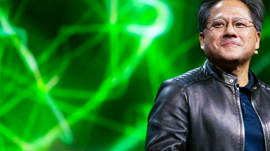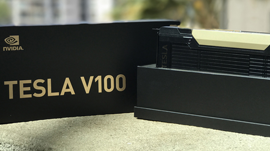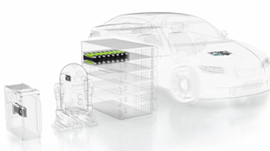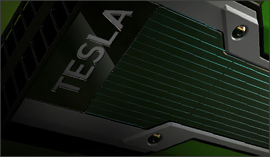In an interview with Fortune, NVIDIA CEO Jen-Hsun Huang weighs in on data centers, driverless cars, and deep learning technology.
Below are some excerpts from the interview:
Fortune: What’s the current status of artificial intelligence?
Jen-Hsun Huang: 2015 was a big year. Artificial intelligence is moving into the commercial world. AI has been worked on for many years, largely in research. Various aspects of commercial use of AI, otherwise known as machine learning, is used for advertising and web searches and things like that. It wasn’t until the last few years that AI could do things that people can’t do. Several milestones were achieved in 2015 in particular that made it possible for us to use it in all kinds of areas.
F: There have been several recent advancements.
J: Yes, in an area of AI called “deep learning.” The system basically learns by itself using a lot of data and computation. If you keep showing it pictures of an orange, it eventually figures out what an orange is—or a Chihuahua versus a Labrador versus a small pony. Amazing things happened in 2015: Microsoft and Google beat the best human at image recognition for the first time. Baidu beat humans in recognizing two languages. Microsoft and the China University of Technology and Science taught a computer network how to take an IQ test, and it scored better than a college postgraduate.
F: Where are we on the adoption curve?
J: Gosh, I wish people knew. I wish I knew. The thing that I can tell you is that AI has been plodding along for 50 years in research. And all of a sudden last year something happened. This new way of doing AI called deep learning is so tractable, so understandable—a tool you can apply so that you can create one single network to be trained to learn multiple languages and animals and things. And that you and I and some data scientists and engineers can train it. Last year AI went from research concept to engineering application. And all these engineers at Facebook and Google and others are taking this deep learning concept with all these frameworks, which is basically another word for tools, and turning these ideas into things of practical use. And now you’re seeing all these Internet companies announcing these practical uses. All of the industries are just exploding. Two years ago we were talking to 100 companies interested in using deep learning. This year we’re supporting 3,500. We’re talking about medical imaging, financial services, advertising, energy discovery, automotive applications. In two years’ time there has been 35X growth.
There was a moment when we realized, maybe we can actually pull this off. That was a lot of typing we were going to do before to detect dogs and cats and grandmas and grandpas and kids and bikes. How many things are you going to type in? How many circumstances are you going to capture? That truck is not a truck; it’s an ambulance. That bus isn’t a normal bus and you can’t just drive by it—it’s a school bus and there are kids about to jump out. How do you capture all that? We never could figure it out. We attempted it. The first thing was advanced driver assistance systems, or ADAS. Going from ADAS to driverless car is a little bit like having a microprocessor in a human brain. I actually don’t know how to go from a microprocessor to a human brain.
F: What does that mean for NVIDIA?
J: Selling GPUs. The data center is the biggest market for us. Every one of them is going to be AI-powered. At the moment there are something along the lines of 10 million nodes of CPUs and servers powering the cloud everywhere. Every one of them. Anyone who has to deal with a lot of big data and customization of services to end users. If you want to customize a service for one user and you have a billion users, you’ll never be able to provide good enough recommendations unless you use something like AI. So anybody who is making recognition of news, information, products, music—they’re all going to be powered by AI.

F: How big is the automotive part?
J: Data centers could very well be our largest market. The largest computer market someday will largely be in the cloud, using AI, using deep learning technology. Self-driving cars? That’s 100 million cars. I hope that every single car is not autonomous but drives so well that it keeps you out of harm’s way.
You should never have an accident, even if you’re driving. I like the idea of a virtual copilot that is superhuman. You’re still driving. You’re still navigating through whatever conditions you’re in. The car somehow always detects something around you—if you’re fine, you’re fine, and if you’re not, it might take over and apply evasive actions. There are a lot of things a car can do without being “self-driving.” But you need the self-driving technology to be able to do it. If you’re going to have a virtual copilot, I would hope that it’s a better driver than I am.
Read the complete interview >>
NVIDIA CEO Shares Current State of Artificial Intelligence
Mar 22, 2016
Discuss (0)

Related resources
- GTC session: Insights from NVIDIA Research
- GTC session: Inside NVIDIA's Growing AI Portfolio
- GTC session: Robotics and the Role of AI: Past, Present, and Future
- NGC Containers: RIVA ASR NIM
- NGC Containers: GenAI SD NIM
- Webinar: Accelerate AI Model Inference at Scale for Financial Services









